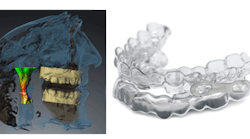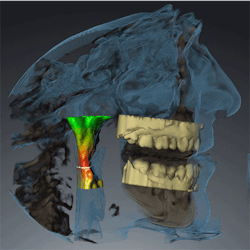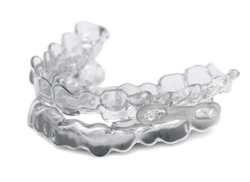Sirona introduces SICAT Air and OptiSleep, the first 3-D solution for analysis and treatment of obstructive sleep apnea
SICAT Air eliminates the need for conventional impressions and stone models, and it provides a 3-D analysis of patents' airways, so appliance-based obstructive sleep apnea treatment can be planned using OptiSleep.
Sirona Dental Inc. unveiled SICAT Air during the 2016 Chicago Midwinter Meeting. Expected to become available during the spring of 2016 with the rollout beginning in April, SICAT Air is a complete digital solution for the appliance-based treatment of obstructive sleep apnea (OSA) that eliminates the need for conventional impressions and stone models. SICAT Air supports treatment compliance by creating an educational experience for OSA patients through the immediate and detailed visualization of obstruction areas.
When integrated with Sirona’s Galileos Comfort Plus and Orthophos SL3D-Ai imaging units, SICAT Air software is also designed to be a communication tool between clinician, patient, and specialist. The software provides a 3-D analysis of the patient’s upper airway with easy and automated segmentation, while allowing the clinician to directly visualize and identify constrictions of the upper airway. In addition, the software visualizes and compares improvements in upper airway advancement along with the actual condyle position within the Galileos Comfort Plus to allow a more predictable appliance-based treatment of OSA.
The endoscopy feature of SICAT Air displays immediate visualization of obstruction sites and acts as a patient communication aid. SICAT Air includes a wide variety of display options that provide a comprehensive learning experience for the patient, helping increase compliance through improved patient understanding of obstructive sleep apnea and treatment options.
For the first time, the patient’s mandibular joints can be taken into consideration while planning appliance-based therapy using Sirona 3-D technologies. Therefore, the risk for craniomandibular dysfunctions can be greatly minimized. By positioning and thoroughly evaluating the jaw in a protruded position, clinicians can plan appliance-based treatment with OptiSleep. The appliance is fabricated in a completely digital workflow, eliminating the need for conventional impressions and stone models.
The OptiSleep appliance
OptiSleep is a comfortable, noncumbersome oral appliance resulting in high patient compliance. By keeping the lower jaw in a forward position, OptiSleep prevents the airway from collapsing, optimizing sleep patterns and providing a more restful sleep. The two-piece appliance has a thin, durable, and stable design, ensuring a comfortable fit while enabling the patient to open the mouth normally to drink and speak and to move the mandible laterally as well as in a protrusive manner to provide additional patient comfort.
OptiSleep can be ordered directly from the SICAT Air software. Within five to eight business days, the patient receives an optimally adapted therapeutic appliance. The OptiSleep appliance is designed by a master dental technician in Germany using CEREC and Sirona 3-D information, and it is optimized to fit perfectly into the patient’s mouth with balanced occlusion.
For more information on the SICAT Air, visit Sirona3d.com.
Source: Sirona press release 25 February 2016



